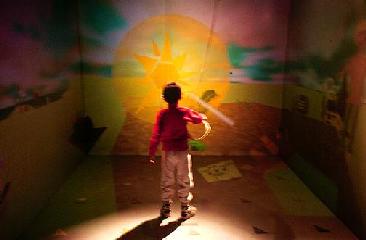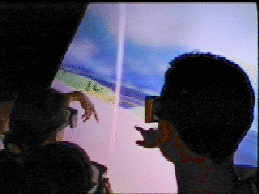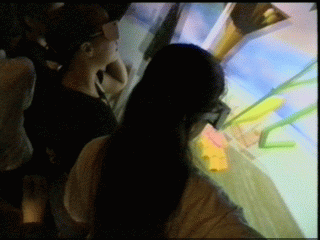

When the user drops a seed on the ground, the corresponding plant, flower or tree will start to grow. The pace in which this happens can be predetermined; we may choose to see the system grow very quickly, or, in the case of a school project, extend it over the period of a semester.
The tomatoes, carrots, pumpkins and other plant objects contain a set of characteristics
that contribute to their growth. They all have values for
their age, the amount of water they hold, the amount of light they need,
their proximity to other plants of their kind.
These values determine the health of the plant and its size.
Visual cues aid the child in determining the state of a plant or flower.
When the cloud has been pouring rain over it for too long, the plant opens
an umbrella; when the sunlight is too bright, it wears sunglasses.
Sound in the environment also enriches the surroundings in a variety of ways.
Different environmental sounds are experienced depending on where each
participant is standing (e.g. the children by the shoreline will hear the
water, in the rainforest will hear the birds, etc.)


| about n.i.c.e | theoretical foundations | n.i.c.e characters & scenes |
|---|---|---|
| who's n.i.c.e? | contact info | publications |
